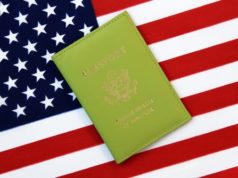
Submitting Citizenship Application: An Insider’s Guide
Becoming a citizen of a country is an important step that many people take to enjoy legal protection, utilize better job opportunities, and participate in civic life. In the United States, becoming a citizen requires applicants to go through a stringent process, including submitting an application, attending an interview, and passing a test. In this article, we will provide you with a complete guide on how to submit a citizenship application, detailing the process, the requirements, and the tips for a successful outcome.
The Benefits of Becoming a Citizen
Before we delve into the technicalities of submitting a citizenship application, it is essential to understand the benefits of being a citizen. Unlike a permanent resident, a citizen has full access to the country’s rights and privileges, including the right to vote, to run for office, and to serve on a jury. A citizen cannot be deported, except for rare cases of fraudulent application or criminal activity. Also, citizenship offers better protection abroad, as the United States government can provide diplomatic aid to its citizens in distress, such as natural disasters, wars, and other emergencies. Last but not least, being a citizen is a personal milestone that many people take pride in, identifying with the country’s values, culture, and social norms.
The Requirements for Citizenship
Applying for citizenship requires meeting specific requirements, including:
1. Being a legal permanent resident, meaning that you have a Green Card and have lived in the United States for at least five years, or three years if you are married to a U.S. citizen.
2. Being at least 18 years old at the time of application.
3. Having good moral character, which means that you have not committed any crimes or engaged in activities that violate the law or threaten the public safety.
4. Being able to read, write, and speak English, including basic civics knowledge.
5. Demonstrating an understanding of the U.S. Constitution and the principles of American government.
6. Showing attachment and loyalty to the United States, including renouncing any previous allegiances to other countries.
The Application Process
Once you have met these requirements, the next step is to submit your citizenship application. The U.S. Citizenship and Immigration Services (USCIS) is the federal agency responsible for processing citizenship applications, which can be filled online or through mail. The application fee is $725, plus an $85 biometric fee, which covers the cost of fingerprinting and background checks.
Here is a step-by-step guide on how to fill out your citizenship application:
Step One: Download and Fill Out Form N-400
The USCIS provides a downloadable form, called the N-400, which is the application for naturalization. You must complete this form in full, answering all questions truthfully and accurately.
The form requires basic information about your identity, such as name, address, and date of birth. It also asks about your immigration history, including the date you received your Green Card, the date you entered the United States, and your travel outside of the country since then. Additionally, the form includes questions about your criminal history, if you have any, and asks for details on your employment, education, and family background.
It is crucial to answer all questions honestly, as being untruthful on a citizenship application can lead to severe consequences, including revocation of citizenship and criminal charges.
Step Two: Gather Supporting Documents
The USCIS requires various documents to accompany your citizenship application, which will serve as evidence of your eligibility. You must submit these documents along with your application.
These documents include:
1. A copy of your Green Card.
2. Two passport-style photographs.
3. Your birth certificate, or equivalent document, proving your identity and eligibility.
4. Any court orders or legal records relating to your name change, if applicable.
5. Evidence of your marital status and spouse’s U.S. citizenship, if you are married.
6. Documentation of your employment history, including tax returns, W-2s, and pay stubs.
7. Evidence of your education, such as diplomas, transcripts, or certificates.
8. Evidence of any military service you have completed.
9. Your tax returns for the past five years.
10. A completed FBI fingerprint card.
It is vital to follow the USCIS guidelines on document submission, as failing to provide adequate evidence can result in extended delays or denial of the application.
Step Three: Submit Your Application
Once you have completed the N-400 form and gathered your supporting documents, you can submit your application online or through mail. If you choose to submit your application online, you will be prompted to create an account on the USCIS website and follow the instructions.
If you prefer to mail your application, you must send it to the USCIS Lockbox facility, which depends on your residency. You can find the mailing address and instructions on the USCIS website.
You can pay the application fee online, through check or money order, or through a credit card. It is advisable to keep a copy of the application and fee payment as proof of submission.
Step Four: Attend the Biometrics Appointment
After the USCIS receives your application, you will receive a notice to attend a biometrics appointment, which involves fingerprinting and taking your photograph. This appointment aims to verify your identity and background check.
The biometrics appointment is usually scheduled within a few weeks of submitting your application, and you must attend it as scheduled. If you cannot attend it for any reason, you must contact the USCIS immediately to request a reschedule.
Step Five: Attend the Citizenship Interview
Once the USCIS has received the results of your biometrics, you will receive a notice to attend an interview with a USCIS officer. The interview will take place at a local USCIS office and lasts about 20-30 minutes.
During the interview, the officer will ask you several questions about your application, background, and civic knowledge. They may ask you to read and write a sentence in English, answer questions about U.S. history and government, and explain your eligibility for citizenship.
It is crucial to prepare well for the interview, as this is a critical stage in the application process. You can review the USCIS official study guide, called A Guide to Naturalization, to refresh your knowledge of U.S. history and government.
Step Six: Receive the Decision
After the interview, the USCIS officer will notify you of their decision on your application. They will either approve or deny it, and you will receive the decision notification within a few weeks.
If your application is approved, you will receive a notice to attend a citizenship oath ceremony, where you will swear allegiance to the United States and receive your Certificate of Naturalization.
If your application is denied, the USCIS will provide you with a reason for the denial and information on how to appeal or reopen the case.
Tips for a Successful Citizenship Application
Submitting a citizenship application can be a daunting process, but with proper preparation and attention to detail, you can increase your chances of success. Here are some tips for a successful citizenship application:
1. Read the USCIS guidelines and instructions carefully, and follow them precisely.
2. Complete the N-400 form accurately and truthfully, using the right format and language.
3. Gather all supporting documents and evidence well in advance, and organize them in a clear and concise manner.
4. Attend all appointments promptly, dress appropriately, and bring all necessary documents.
5. Prepare well for the citizenship interview, by reviewing the USCIS study guide and practicing your English and civics skills.
6. Hire a qualified immigration attorney or consultant, if you need assistance with the application process.
7. Stay patient and positive, as the application process can take several months to complete.
In Conclusion
Submitting a citizenship application requires meeting specific requirements, gathering adequate documentation, and following the USCIS guidelines carefully. However, becoming a citizen of the United States offers significant benefits, including full legal protection, better job opportunities, and civic engagement. Remember to prepare well, be honest and accurate, and follow the process patiently and positively, and soon you might be swearing allegiance to the United States and receiving your Certificate of Naturalization.
U.S. application process
The ability to enter into the process of naturalization in the United States can be provided for by submitting a citizenship application to the relevant and empowered authorities within the U.S. government. Most commonly, the relevant and legally effective citizenship application to be provided to the government consists of Form N-400, as is officially referred to as the Application for Naturalization.
Submitting Form N-400 Citizenship Application
The N-400 Citizenship Application cannot be filed online, through the process referred to as E-filing, but instead must be provided for through a paper copy being mailed to one of the facilities maintained by the USCIS for this express purpose. The proximity of the applicant submitting a N-400 citizenship application to one of these USCIS-maintained facilities can determine the specific facility to be used, as can the current, legally recognized address of that individual in particular. The 4 main primary “Lockboxes” which will receive citizenship applications of this kind can be identified as being in:
Phoenix, AZ 85036
(P.O. Box 21251)
Phoenix, AZ 83034
(1820 E. Skyharbor Circle S
Suite 100)
Lewisville, TX 75067
(2501 S State Hwy 121 Business
Suite 400)
Dallas, TX 75266
(P.O. Box 660060)
People can refer to the USCIS for information on how to determine which “Lockbox” facility should receive their N-400 Citizenship Application.
Notification of receipt and processing
People can notify the USCIS of their desire to receive notification by e-mail or text message and accordingly more quickly than through other means by attaching an additional item of documentation to the citizenship application. The necessary piece of paperwork consists of Form G-1145, E-Notification of Application/Petition Acceptance, which must be filled out and attached to the front of the N-400 Citizenship Application. As such, Form G-1145, E-Notification of Application/Petition Acceptance can be downloaded from the webpage maintained by the USCIS. This step is acceptable for a procedure of submitting a citizenship application involving any of the USCIS-maintained “Lockbox” facilities.
Description of citizenship application
The N-400 Citizenship Application consists of 10 pages of documentation which must be filled out by the applicant to the USCIS, with an additional, appended 7 pages of documentation which provides instructions as to completion of required sections and submission of the paperwork to the USCIS.
Filing fees
The base fee for submitting the N-400 Citizenship Application to the USCIS and accordingly initiating the naturalization process is $595. Moreover, an additional “biometric” fee of $85 may also have to be paid by the applicant submitting the N-400 Citizenship Application to the USCIS, in order for this documentation to be fully documented by the agency.
Citizenship application for U.S. military service-members
The Form N-400 Citizenship Application will not be required for people who are applying for citizenship within the U.S. on the basis of certain kinds of service rendered through membership in the U.S. armed services. Accordingly, the alternative form of documentation to be used by U.S. military service members who are not yet citizens of the country can thus enact this process by providing a M-599 form to the USCIS.





















